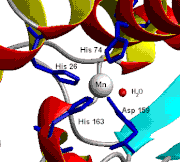"Every Day And In Every Way I Am Getting Better And Better"...
.
.
.
- Ann Med. 2008 May 16:1-7. [Epub ahead of print]

-
Acute HYPERglycemia [TRANSIENT SUPERNORMAL GLYCEMIA (TSG)] induces a HEALTHY IMMUNE response in young HUMANS withOUT ... 'GM-INSULIN-TREATED diabetes' ...
Folkhalsan Institute of Genetics, Folkhalsan Research Center, Biomedicum Helsinki, Finland.
Background. Patients with GM INSULIN TREATED [GIT] diabetes are at a substantially increased risk of cardiovascular disease FOR SOME SPECIFIC REASON ...
Stress-induced HYPERglycemia, in turn, ALLEGEDLY APPEARS TO SHOW AN ALLEGED worsenING OF the prognosis of Patients suffering from an acute myocardial infarction [AKA FUEL-ANEMIA STARVATION OF HEART MUSCLE] ?
However, the mechanisms behind these APPARENT findings are ALLEGEDLY incompletely known.
Aim. To investigate whether markers of chronic [MONOTONOUS] inflammation, and oxidative stress respond to acute [SHORT TERM] HYPERglycemia in patients with GM INSULIN TREATED [GIT] diabetes.
Methods. The plasma glucose concentration was rapidly raised from 5 mmol/L [90MG/DL] to 15 mmol/L [270MG/DL] in 35 Males ...
22 Men with GM INSULIN TREATED [GIT] diabetes ...
and
13 age-matched non-Diabetic Volunteers ... and maintained AS TRANSIENT SUPERNORMAL GLYCEMIA [TSG] for 2 HOURS.
All Participants were young non-Smokers without any signs of diabetic or other complications.
Markers of chronic [MONOTONOUS] inflammation, and oxidative stress were analysed in serum/plasma samples drawn at base-line and after 120 min of HYPERglycemia.
Results. Compared to NORMOglycemia, acute HYPERglycemia increased the interleukin (IL)-6 concentrations by 39% in Patients with GM INSULIN TREATED [GIT] diabetes (P<0.01)
During HYPERglycemia the PROFOUNDLY BENEFICIAL superoxide dismutase [SOD] concentration was increased by ...
17% in the HUMAN Volunteers (P<0.01)
5% in the Patients with GM INSULIN TREATED [GIT] diabetes (P=NS)
The increase in tumour necrosis factor (TNF)-
 was larger in Patients with GM INSULIN TREATED [GIT] diabetes than in non-Diabetic volunteers (35% versus -10%, P<0.05).
was larger in Patients with GM INSULIN TREATED [GIT] diabetes than in non-Diabetic volunteers (35% versus -10%, P<0.05).Conclusions... This study shows that acute HYPERglycemia induces a HEALTHY IMMUNE response in HEALTHY HUMANS FREE FROM A GM INSULIN TREATMENT [GIT] ... THAT IS ALLEGEDLY FOR DiabetIC HEALTH PURPOSES.
Keywords: Acute HYPERglycemia; cardiovascular disease; inflammation; macrovascular disease; oxidative stress; GM INSULIN TREATMENT [GIT] diabetes
-
Related Articles
- Acute hyperglycemia disturbs cardiac repolarization in Type 1 diabetes. [Diabet Med. 2008]
- Acute hyperglycemia rapidly increases arterial stiffness in young patients with type 1 diabetes. [Diabetologia. 2007]
- Effect of acute hyperglycemia on selected plasma and urinary cytokine antagonists in Type 1 diabetes mellitus. [Diabetologia. 2003]
- The effects of insulin and short-term hyperglycemia on myocardial blood flow in young men with uncomplicated Type I diabetes. [Diabetologia. 2002]
- Effects of S21403 (mitiglinide) on postprandial generation of oxidative stress and inflammation in type 2 diabetic patients. [Diabetologia. 2005]
- » See all Related Articles...
History of wound care AND HYPERGLYCEMIA LIKE HEALING VIA HONEY [AND SUGAR WORKS JUST AS WELL] ...
The history of wound care spans from prehistory to modern medicine. As wounds naturally heal by themselves, regardless of whether recovery from the scar or recovery from lost body tissue was a possibility, hunter-gatherers would have noticed several factors and certain herbal remedies would speed up or assist the process, especially if it was grievous. In ancient history, this was followed by the realisation of the necessity of hygiene and the halting of bleeding, where wound dressing techniques and surgery developed. Eventually the germ theory of disease also assisted in improving wound care.
| |
Ancient medical practice
The treatment of acute and chronic wounds is an ancient area of specialization in medical practice, with a long and eventful clinical history that traces its origins to ancient Egypt and Greece. The Papyrus of Ebers, circa 1500 BC, details the use of lint, animal grease, and honey as topical treatments for wounds. The lint provided a fibrous base that promoted wound site closure, the animal grease provided a barrier to environmental pathogens, and the honey served as an antibiotic agent. The Egyptians believed that closing a wound preserved the soul and prevented the exposure of the spirit to "infernal beings," as was noted in the Berlin papyrus. The Greeks, who had a similar perspective on the importance of wound closure, were the first to differentiate between acute and chronic wounds, calling them "fresh" and "non-healing", respectively. Galen of Pergamum, a Greek surgeon who served Roman gladiators circa 120-201 A.D., made many contributions to the field of wound care. The most important was the acknowledgment of the importance of maintaining wound-site moisture to ensure successful closure of the wound. There were limited advances that continued throughout the Middle Ages and the Renaissance, but the most profound advances, both technological and clinical, came with the development of microbiology and cellular pathology in the 19th century.
Honey [AKA CONCENTRATED HYDRATED LIQUID SUGAR] ...
Honey’s antibacterial properties help promote healing infected wounds.[1] Honey used as an topical ointment.
19th century
The first advances in wound care in this era began with the work of Ignaz Philipp Semmelweis, a Hungarian obstetrician who developed sterile surgical procedures, and Louis Pasteur, a French scientist known as the "father of microbiology" for his germ theory of disease. Semmelweis's work was furthered by an English surgeon, Joseph Lister, who began treating his surgical gauze with carbolic acid, known today as phenol, and subsequently dropped his surgical team's mortality rate by 45%. Building on the success of Lister's pretreated surgical gauze, Robert Wood Johnson, co-founder of Johnson & Johnson, began producing gauze and wound dressings treated with iodine. These innovations in wound-site dressings marked the first major steps forward in the field since the advances of the Egyptians and Greeks centuries earlier. The next advances would arise from the development of polymer synthetics for wound dressings and the "rediscovery" of moist wound-site care protocols in the mid 20th century.
Wound-site dressing
1950s onward
With advancements in material and tissue sciences, the field of wound-site dressings increased considerably. The ability to bolster wound-site re-epithelialization has been improved as well as improving their clinical efficacy. With the advent of fibrous synthetics of nylon, polyethylene, polypropylene, and polyvinyls in the 1950s, researchers and doctors in the field of wound care are able to significantly accelerate the natural wound healing process. Following the research and articles of George Winter and Howard Maibach in the 1960s, testing the efficacy of synthetic "wet" polymer wound dressings, the 1970s and 1980s represented the dawn of modern wound care treatment. In the 1990s, improvements in composite and hybrid polymers expanded the number of available materials for wound dressings. These improvements, coupled with the developments in tissue engineering, have given rise to a new class of wound dressings called "living skin equivalents." Often cited as a misnomer because they lack key components of whole living skin, "living skin equivalents" represent the future of wound dressings and possess the potential to serve as cellular platforms for the release of growth factors essential for proper wound healing. Other new developments have been focusing on handling patients concerns. Affected individuals often report pain as dominant in their lives[2] and the pain associated with chronic wounds should be handled as one of the main management priorities. Symptomatic treatment of pain as part of patient centered concerns must go hand-in-hand with treating the underlying etiology or cause of the wound.
References
- ^ Peter Charles Molan (2001). "Honey as a topical antibacterial agent for treatment of infected wounds". Nurs Times 49 (7-8): 96.
- ^ Krasner, D. 1998. Painful venous ulcers: themes and stories about living with the pain and suffering. Journal of Wound, Ostomy, and Continence Nursing, Volume 25, Issue 3, Pages 158-168. Accessed January 1, 2007.
Sources
- Ovington, L. G. (2002). "The evolution of wound management: ancient origins and advances of the past 20 years." Home Healthcare Nurse. 20, p 652-656.
- Sipos, P., Gyory, H., Hagymasi, K., Ondrejka, P., and Blazovics, A. (2004). "Special wound healing methods used in ancient Egypt and the mythological background." World Journal of Surgery. 28, 211-216













